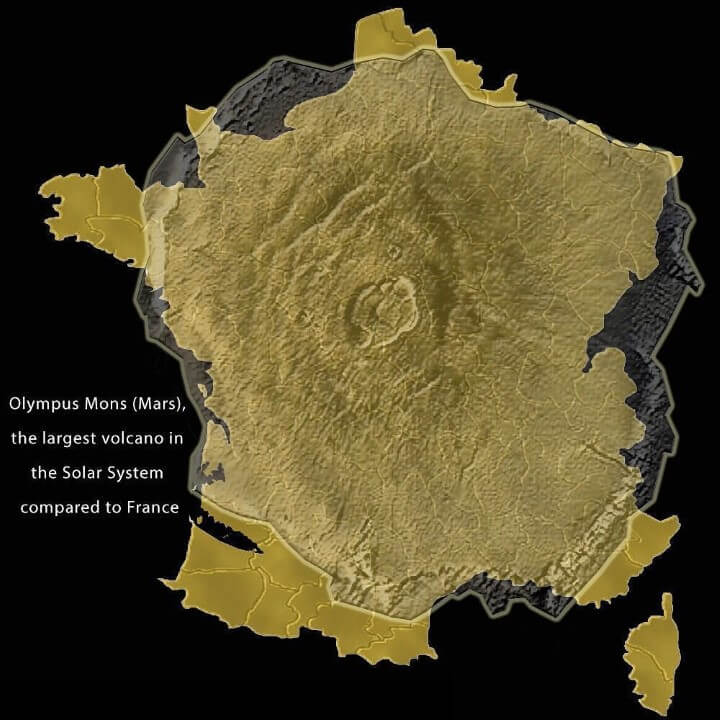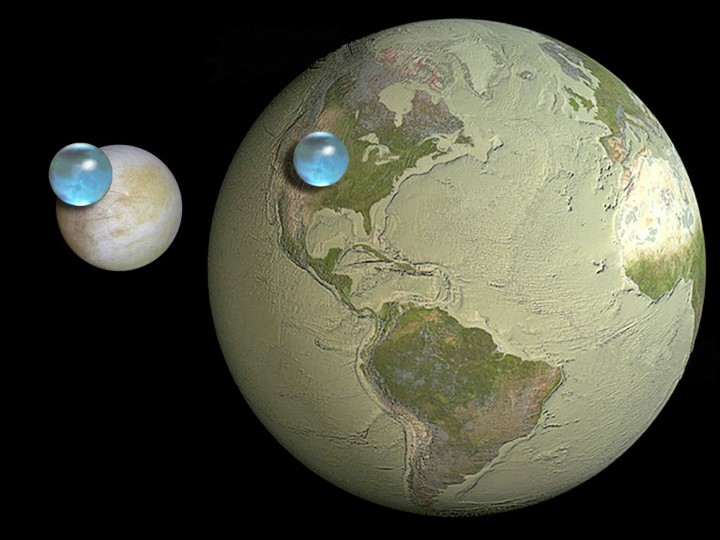The map above shows the all of the solid surfaces in our solar system stitched together into one giant map.
It excludes gas giants, such as Jupiter, since they do not have any solid land but includes moons, asteroids, comets, etc.
Making Sense Of The World, One Map At A Time
Last Updated: 5 Comments
The map above shows the all of the solid surfaces in our solar system stitched together into one giant map.
It excludes gas giants, such as Jupiter, since they do not have any solid land but includes moons, asteroids, comets, etc.
Last Updated: 5 Comments

Olympus Mons is the tallest mountain and largest volcano on any planet in the solar system.
Its height from base to peak is 21.9 km (13.6 mi or 72,000 ft) or 26 km (16.2 miles) above the northern plains. This makes it at least two and a half times taller than Mount Everest’s height above sea level.
Last Updated: 2 Comments

Most of us tend to think of Earth as being the sole planet in the solar system with water. Water exists on Mars, but almost exclusively as ice.
For the time being, Earth remains the lone planet in the universe to have stable bodies of liquid water on its surface. However, it may not be the celestial body with the most water or even the most liquid water within our own solar system.